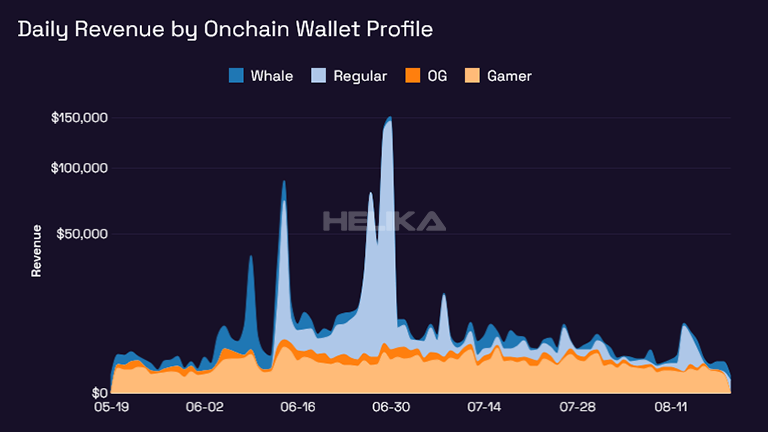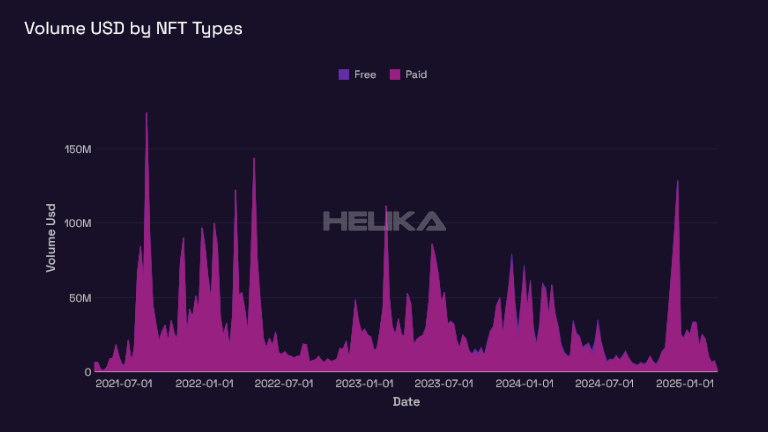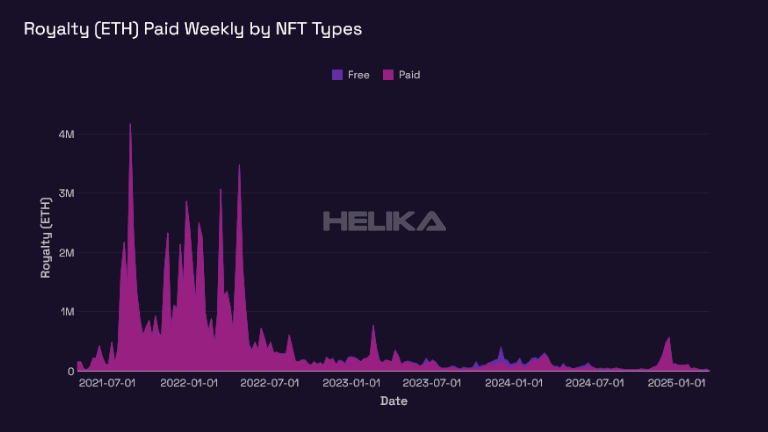The gaming industry has evolved through out the years as technology develops. With the integration of blockchain, the gaming landscape has once again been disrupted as non-fungible tokens present new economic models and opportunities for gamers, game developers, and investors.
In this article, we will be discussing the various aspects of gaming that are impacted by the implementation of blockchain technology. From traditional game studios to decentralized autonomous organizations, we will explore how this innovative technology is changing the way we play and interact with games.
The Rise of NFT Marketplaces
Before we dive deeper into the mechanics of how blockchain is revolutionizing the gaming industry, we need to first understand the concept of non-fungible tokens (NFTs). Simply put, NFTs are unique digital assets that are verified on a blockchain. This means that each NFT has its own distinct identity and cannot be replicated or duplicated.
The emergence of NFT marketplaces has given gamers the opportunity to buy, sell, and trade virtual assets such as in-game items or collectibles. This adds a whole new layer to the gaming experience as players now have actual ownership and control over their virtual assets. Some of the most popular NFT marketplaces for in-game assets include OpenSea, The Sandbox, and Axie Infinity.



OpenSea started in 2018 and has since become the largest NFT marketplace, with over $4.5 million as of January 2024. With in-game items ranging from virtual real estate to unique skins, OpenSea has attracted a wide range of gamers and investors looking to profit from the growing NFT market. The way these in-game assets work through blockchain technology is that true ownership and scarcity are established, making them valuable to buyers.
Imagine gaming for hours on end to finally unlock that rare in-game item, only to have it disappear when you stop playing or switch to a different game. With NFTs, this problem is eliminated as players truly own their virtual assets and can choose to keep them, trade them, or sell them at any time. This is because blockchain technology allows for the creation of decentralized gaming platforms, meaning there is no central authority controlling the ownership and transfer of assets.
Any player can create a new wallet (owned by them and independent from the game developers) to store, use or sell their virtual assets. This adds real world value to the virtual items, as they can be bought and sold just like physical assets. In addition, NFTs also allow for verifiable ownership and authenticity of unique in-game items, preventing fraud or counterfeit items from being circulated on the market.
Furthermore, the use of NFTs in gaming also opens up new possibilities for cross-game interaction. In traditional gaming, items and progress are often limited to specific games or platforms. With NFTs, players can potentially use their assets in different games, creating a more seamless and interconnected gaming experience. This could also lead to the rise of metaverse gaming, where virtual worlds are connected and players can move between them with their NFT assets intact.
Virtual Worlds Open Up New Opportunities For Strategic Partnerships
Virtual worlds, also known as metaverses, are simulated environments where users can interact in more immersive and interactive ways. When it comes to the economics of these virtual worlds, limitations persisted due to lack of ownership and control. However, with the introduction of blockchain technology, users can now own and trade virtual assets like never before.
This has opened up new opportunities for strategic partnerships within the gaming industry. Developers can now collaborate with other games or platforms to create unique crossover experiences, leveraging each other’s NFT assets. This not only benefits the players, who can access a wider range of content, but also allows for increased revenue and exposure for both parties involved.

In addition, companies outside of the gaming industry are now also taking notice of the potential of virtual worlds and NFTs. Brands can partner with game developers to create immersive branded experiences within the games. From Fortnite’s virtual concerts to luxury fashion brands collaborating with virtual worlds, the possibilities are endless.
People are spending more and more time online. Virtual worlds are the next step in that evolution, providing a more immersive and interconnected experience for users. Socializing in these worlds are becoming the norm and shopping for items that express identity or enhance ability within the virtual world is becoming a common practice. This opens up opportunities for businesses to not only advertise within these worlds, but also sell and market their products directly to users.
However, in order to bring their physical products into a digital form, tokenization is necessary. This is where NFTs come into play, allowing for the tokenization of physical assets such as clothing, accessories, and even real estate. By pairing the physical object with a unique digital token, it can be traded and used within virtual worlds. Phygital is a new term that has emerged, referring to the blending of physical and digital assets.
Imagine a wearing a real world brand’s item, let’s say Nike shoes in a popular metaverse game and then being able to wear that same shoe in another virtual world. Let’s say you meet someone there and you both bond over being sneakerheads. As much as you love those virtual sneakers as an identifier of your support for the brand, you’re willing to sell them to your new friend. It’ll look better on his avatar anyways.
Well, you can do that with NFTs. You simply transfer the unique digital token representing the virtual sneaker to your friend in exchange for a payment, just like you would with any other physical item. Whether it be secondary markets (which collects a fee) or directly (which requires more trust) these transactions can happen seamlessly.
Gaming Projects Begin Creating Sustainable In-Game Economies
True ownership of in-game assets has been a long-standing issue in the gaming industry. With NFTs, developers now have the ability to create sustainable in-game economies by allowing players to truly own and trade their virtual assets. This not only adds value to the game itself, but also provides a new revenue stream for developers. Players can earn money by selling rare items or even creating their own unique content within the game.

As these economies grow, we may even see real-life businesses emerging within virtual worlds, such as player-run shops and services. This blurring of lines between physical and digital assets has the potential to revolutionize the gaming industry and create endless possibilities for players and developers alike.
Imagine a virtual designer, hiring a small team of in-game asset builders (maybe furniture?) and renting a store with cryptocurrency in a virtual world. Players could then purchase these items and decorate their virtual homes with unique pieces, creating a thriving market within the game.
With this new level of freedom and ownership, we may see an increase in player engagement and loyalty to certain games, as they have invested real time and money into their virtual assets. This could also lead to more innovation and competition among developers to create the most immersive, engaging experiences for players.
It also takes the burden of game asset creation off of developers, as they can now rely on player-generated content to keep the game fresh and interesting. This opens up opportunities for indie developers and smaller studios to compete with larger companies in terms of content creation.
Although more and more people are spending time in the gaming worlds, and despite eSports and streaming opening monetization oppurtunities for gamers, the ability for the average non-entertaining gamer to earn a living from playing games is still limited. However, with the emergence of virtual economies and player-created content, this may change in the future.
It’s true that many early NFT games failed to have a sustianable economy and gaming become more of a work-for-hire system rather than play and fun as video games initially were. But with experience, better tokenomics, better utility for NFTs and integration of blockchain technology, we may see a shift towards more player-owned and operated economies in games.
Opinion & Perspectives: Community-Driven Development Regarding The ‘Earn Model’ of Blockchain Games
The gaming community has always been vocal about their opinions and perspectives on various topics, and the rise of blockchain games is no exception. On Reddit, a popular forum and discussion platform for gamers, there have been numerous discussions surrounding the concept of an ‘earn model’ in blockchain games.
The opinions are varied, with some users expressing excitement and anticipation for the potential to earn real money through playing games. One redditor says, “I don’t say that’s better or worse, it’s just different. For sure that gaming studios are miles ahead off chain than on-chain, but this gap is getting shorter every year. There’s a lot of ground to cover, but its being covered. Personally, I appreciate the asset ownership through NFTs as a player and I also find it an interesting funding tool for ongoing developments for gaming studios.”
Although others are more skeptical, questioning the sustainability and practicality of earning a living through blockchain games. A user commented, “Adding a token that has value ruins any game. I played games to have fun, not grind for $0.50/hr. I like the idea of in game gear being NFTs you could bring to other games but that involves convincing other game makers to support your NFTs and they’re disincentivized from doing that.”
As you can see, there are varying opinions and perspectives on this emerging topic. However, what we can learn is that game developers shouldn’t require the purchase of in-game assets with real money in order to progress or be successful. The ‘earn model’ should be an optional feature that adds value and rewards players for their time and effort invested in the game. Although rewards aren’t going to match high paying real world jobs, earning an extra few dollars while having fun playing a game can be a nice bonus.

Game developers that can maintain fun without needing players to grind for hours or spend excessive amounts of money will likely see more long-term success. It’s also important for game developers to create a balance between the on-chain and off-chain aspects of their game. Embracing blockchain technology can bring unique opportunities for players and game developers, but it’s important not to overlook the traditional elements that make a game enjoyable.
4. Predictions For The Future of Blockchain Gaming
Now that we’ve covered where blockchain gaming is currently at and the potential benefits and challenges, it’s time to make some predictions for the future. Here are a few possibilities that could shape the future of blockchain gaming:
Prediction #1 – Gaming Ecosystems Will Continue To Adopt Real-World Value Through Blockchain Technology
As more and more gaming ecosystems incorporate blockchain technology, we can expect to see a continued trend of in-game assets having real-world value. This will open up new opportunities for players to earn money while playing their favorite games and for developers to monetize their creations in a fair and transparent way.
With RWAs (Real-World Assets) becoming a staple in blockchain gaming, we may even see traditional assets being represented on the blockchain and used within games. This could lead to the creation of virtual economies that closely mirror real-world economies, further blurring the lines between the physical and digital worlds.
Prediction #2 – Daily Active Wallets Will Continue To Rise as Game Developers Unlock New Revenue Streams
With Web3, creating a wallet and transacting on the blockchain becomes easier than ever before. As more games incorporate blockchain technology, we can expect to see a rise in daily active wallets as players look to participate in these new economies.
Serving as a vault for players’ assets, these wallets will become more important than ever and could potentially serve as a universal wallet for all of their gaming needs. From their avatars’ skins and items to their in-game currency, players will be able to store everything in one place and transfer it seamlessly between games.
Prediction #3 – Institutional Investors Will Continue To Make Significant Investment Into The Industry
The blockchain gaming industry is witnessing explosive growth, with forecasts predicting a remarkable compound annual growth rate (CAGR) of approximately 68% between 2024 and 2030. By the end of the decade, the market is expected to soar to an estimated value of $301.5 billion.
With that in mind, it’s fair to assume that investments will be pouring into the industry from institutional investors looking for lucrative opportunities. This will not only provide a shortcut to success for blockchain gaming projects, but it’ll also add further legitimacy to the industry as a whole. Combined with the eSports industry, jobs within the gaming industry are also expected to rise, creating new opportunities for developers and gamers alike.
Prediction #4 – Analytics Will Play a Pivotal Role When it Comes To Building a Great Crypto Game
Analytics have been a critical component of the traditional gaming industry for years. With the rise of blockchain gaming, we can expect this to become an essential aspect of developing successful games using this technology. On-chain data, such as player activity, transaction volume, and user behavior, provide valuable insights that can help developers create better gaming experiences.
Here at Helika, we serve as one of the leading Web3 analytics companies, dedicated to providing developers with the tools they need to build and maintain successful blockchain games. Our analytics platform offers real-time data on several key metrics, including player retention, in-game economy performance, and market trends. By leveraging this information, game developers can make data-driven decisions that lead to more engaging and profitable games.
Final Thoughts
Traditional gaming platforms are going through a revolutionary period as smart contracts, non-fungible tokens (NFTs), and decentralized finance (DeFi) are making their way into the industry. With these advancements, blockchain gaming is poised to take the gaming world by storm, providing players with new levels of ownership and freedom, as well as creating new opportunities for developers.
With the gaming sector growing at a rapid pace, it’s an exciting time for technological advancements in the industry. As we move into this new era of gaming, it’s clear that blockchain technology will play a significant role in shaping its future.
Whether you are world-renowned developer looking to explore the potential of blockchain gaming, or simply an indie developer with a passion for creating unique and immersive experiences, we hope this guide has provided valuable insights into the world of blockchain gaming. Contact us today to learn how Helika can improve the analytics of your blockchain game and help you create a successful Web3 gaming experience for players worldwide.


